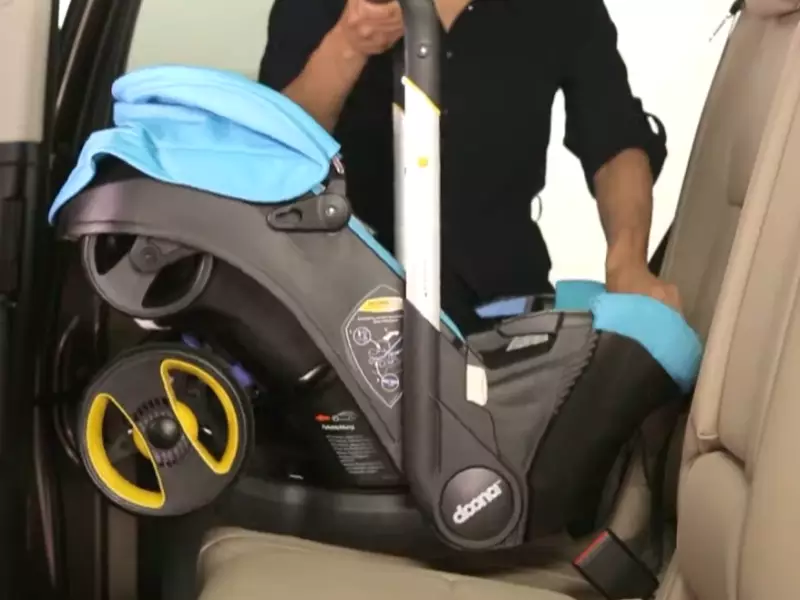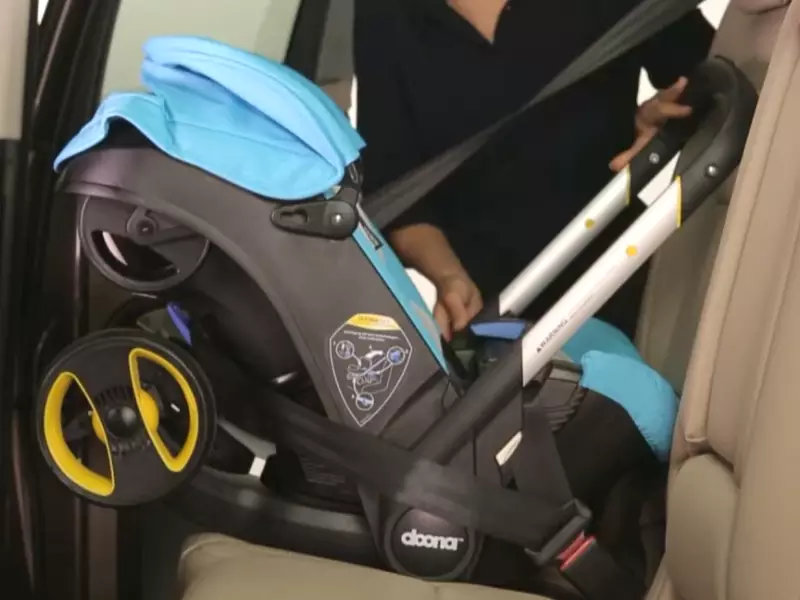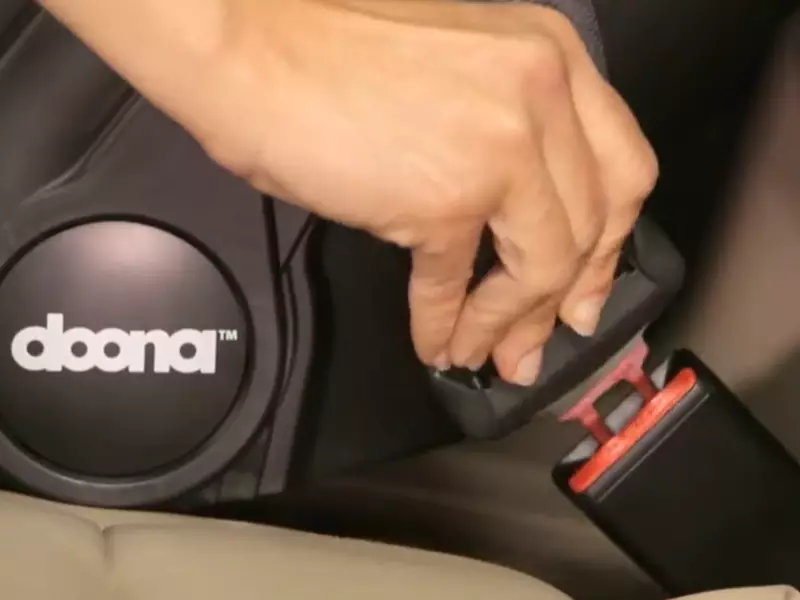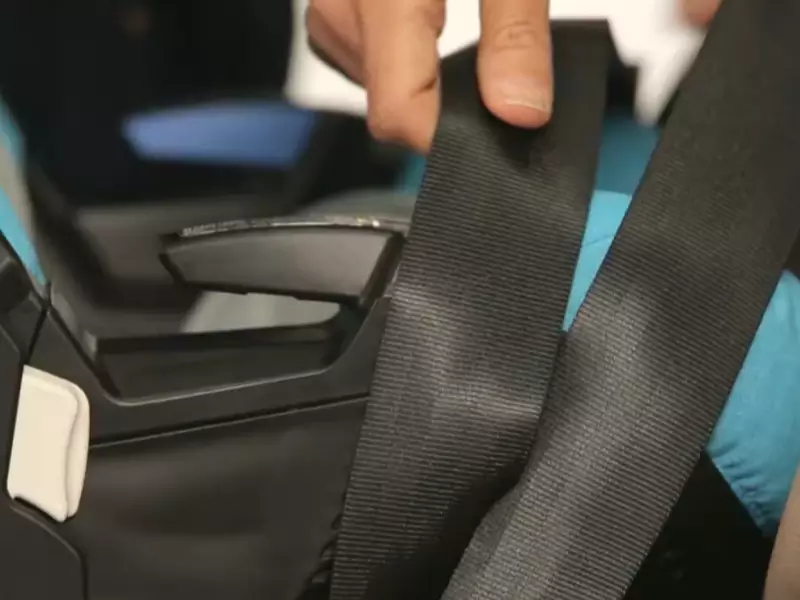To install an infant car seat without a base, follow the manufacturer’s instructions precisely and securely strap the seat into the vehicle using the seat belt. Installing an infant car seat can be a crucial task to ensure the safety of your little one during travels.
While car seats typically come with a base for convenience, situations may arise where a base is not available or suitable. However, fret not, as installing an infant car seat without a base is still possible, as long as you adhere to the right steps and guidelines.
We will explore a precise and accurate method to install an infant car seat without a base. So, let’s dive right in and learn how to secure your precious bundle of joy without relying on a car seat base.
Understanding The Importance Of Proper Infant Car Seat Installation
Installing an infant car seat correctly is of utmost importance when it comes to ensuring the safety of your little one during car rides. Many parents are unaware of the potential risks associated with incorrect installation and may not fully comprehend the gravity of the situation. In this article, we will delve into the significance of proper infant car seat installation, highlighting why it is crucial for your baby’s safety.
By understanding the importance of proper installation, you can take the necessary precautions to protect your child on the road.

Why Proper Installation is Crucial for Infant Safety
Proper installation of an infant car seat plays a vital role in protecting your little one during car rides. It provides a secure and stable environment, minimizing the risk of injury in case of an accident or sudden braking. Consider the following reasons why proper installation is paramount:
- Protection from Impact: A properly installed car seat ensures that the impact of a collision is distributed evenly across the seat, reducing the chances of serious injuries to your baby.
- Preventing Ejection: Incorrect installation can result in the car seat becoming detached or dislodged, potentially leading to your baby being ejected from the seat during an accident.
- Proper Positioning: Correctly installing the car seat allows for the proper positioning of your child, ensuring their head, neck, and spine receive the necessary support and protection.
- Minimizing Head Injury: A securely installed car seat prevents excessive movement of your baby’s head, reducing the risk of head injuries in the event of sudden stops or collisions.
- Decreasing the Risk of Secondary Injuries: Proper installation of the car seat also helps to prevent secondary injuries caused by loose objects or parts of the car seat itself during a crash.
Consequences of Incorrect Installation
Installing an infant car seat incorrectly can have severe consequences that may compromise your baby’s safety and well-being. It’s essential to be aware of the potential risks associated with improper installation:
- Inadequate Protection: Incorrectly installed car seats may not provide the necessary protection for your child, making them more vulnerable to serious injuries.
- Increased Risk of Injury: In the event of a collision or sudden braking, an improperly secured car seat can lead to your baby being thrown forward or colliding with the inside of the vehicle, increasing the risk of injury.
- Head and Neck Injuries: A poorly installed car seat can fail to provide adequate head and neck support, putting your little one at a higher risk of head and neck injuries during accidents.
- Chances of Ejection: Loose or improperly fastened car seats may cause your baby to be ejected from the seat, putting them in direct danger during a crash.
- Injury from Loose Objects: If the car seat is not properly secured, loose objects within the vehicle can become projectiles, potentially causing harm to your child in the event of an accident.
Understanding the importance of proper infant car seat installation is crucial for any parent. By taking the time to ensure correct installation, you are actively prioritizing your baby’s safety and reducing the risks associated with car travel. Remember, it is always recommended to consult the car seat’s manual and consult with a Certified Child Passenger Safety Technician to ensure the correct installation and use of the car seat.
Step 1: Preparing For Installation
Gathering the necessary tools and equipment
Before you start installing an infant car seat without a base, it’s important to gather all the necessary tools and equipment to ensure a smooth installation process. Having the right tools at hand will make this task much easier and hassle-free.
Here are the tools you’ll need:
- Infant car seat – Ensure that the car seat is appropriate for your child’s age and weight.
- Seatbelt – Check that the seatbelt is in good condition and functions properly.
- Seatbelt Locking Clip – This clip helps keep the seatbelt tight and secure.
- Towel or Pool Noodle – These items can be used as additional support to achieve the proper angle for the car seat.
- Assistant – Having someone to help you during the installation process can be beneficial, as they can hold the car seat steady while you work.
Make sure you have all these tools and equipment gathered before proceeding with the installation.

Reading the car seat instruction manual
Now that you have all the tools and equipment ready, it’s essential to read the car seat instruction manual thoroughly. Each car seat model may have different installation instructions, so it’s crucial to understand the specific requirements for your car seat model.
When reading the manual, pay close attention to the following:
- Weight and height limits – Ensure that the car seat is appropriate for your child’s size.
- Proper installation method – Familiarize yourself with the correct way to install the car seat without a base.
- Adjustment options – Learn how to adjust the car seat’s straps and harness to fit your child securely.
- Airbag precautions – Be aware of any warnings or precautions related to the car seat’s compatibility with airbags.
Taking the time to read and understand the car seat instruction manual will help you install the car seat correctly and ensure your child’s safety.
Step 2: Selecting The Appropriate Car Seat Installation Method
Once you’ve chosen the right infant car seat for your little one, the next step is to determine the appropriate installation method. Installing an infant car seat without the base requires careful consideration of various factors. This step-by-step guide will help you understand the available methods and provide insights into key factors to consider when selecting the right method for your needs.
Understanding the methods available
When it comes to installing an infant car seat without the base, there are two primary methods you can choose from. Each method offers different advantages and considerations:
Rear-facing using the seatbelt
This method involves securing the baby car seat directly to your vehicle using the seatbelt. It’s important to note that not all car seats are designed for this type of installation, so ensure your car seat explicitly allows this method. Some advantages of this method include:
- Flexibility in using the car seat in multiple vehicles without the need for the base
- Simplicity in installation and removal without the base
- Compatibility with older or different model vehicles that may not have the LATCH system
Using the European belt path
This method involves threading the vehicle’s seatbelt through a specific path on the car seat to secure it properly. The European belt path provides an alternative way to install the car seat without the base. Consider the following advantages:
- Extra secure installation with seatbelt threading for added stability
- Ideal for situations where the seatbelt system is incompatible with the traditional installation method
- Particularly useful for smaller or narrower vehicles
Factors to consider when selecting the method
When selecting the appropriate car seat installation method, it’s essential to take into account various factors to ensure your baby’s safety and comfort. Consider the following:
| Factor | Consideration |
|---|---|
| Car seat compatibility | Ensure that your chosen car seat is specifically designed for the selected installation method. |
| Vehicle compatibility | Take into consideration your vehicle’s seatbelt system, including the ability to secure the car seat tightly and the compatibility of the European belt path method. |
| Stability and ease of installation | Consider the stability of the installation method and whether it allows for easy installation and removal. |
| Additional features | Take note of any additional features provided by the installation method, such as extra security or compatibility with specific vehicle models. |
By carefully considering these factors, you can select the appropriate car seat installation method that ensures your little one’s safety and provides peace of mind when traveling.

Step 3: Installing The Infant Car Seat Without A Base
Installing an infant car seat without a base is essential for parents who frequently travel in multiple vehicles or do not have access to a car seat base. While it may seem daunting at first, properly installing the car seat without a base is relatively straightforward. In this step-by-step guide, we will walk you through the process of securely positioning and fastening the car seat using only the vehicle’s seat belt.
Positioning the car seat correctly in the vehicle
Before securing the car seat, it’s crucial to position it correctly within the vehicle. Follow these simple steps to ensure optimal safety:
- Place the car seat in the back seat of the vehicle, facing the rear. This position is the safest for infants.
- Ensure that the car seat is centered on the seat, with no part hanging over the edges.
- Adjust the recline angle of the car seat to match the angle recommended by the manufacturer. This ensures your baby’s head won’t flop forward while in transit.
Securing the car seat using the seat belt
Now that you have positioned the car seat correctly, it’s time to secure it using the seat belt. Follow these steps:
- Thread the vehicle’s seat belt through the designated path on the car seat. Refer to the car seat’s manual for specific instructions on thread placement.
- Ensure that the seat belt is not twisted and lies flat against the car seat.
- With one hand, press down on the car seat to compress it firmly into the vehicle seat, creating a tight and secure fit.
- Guide the seat belt through the buckle and pull it tight.
- Listen for a distinct clicking sound, indicating that the seat belt is securely fastened.
- Once the seat belt is securely fastened, perform a final tug test to ensure the car seat does not move more than an inch in any direction.
Remember, never rush through the installation process. Take the time to double-check that the car seat is securely fastened before hitting the road. By following these steps, you can confidently install an infant car seat without a base and provide a safe and comfortable travel experience for your little one.
Step 4: Checking The Installation For Safety
Now that you have successfully installed your infant car seat without the base, it’s crucial to perform a thorough safety check. This step will ensure that your little one is secure and protected during every ride. Take a few minutes to follow these essential checks:
Perform the “inch test” to ensure a snug fit
Once your infant car seat is installed, it’s important to check for a snug fit. To do this, grasp the car seat near the seat belt path and try to move it side to side and front to back. A properly installed car seat should not move more than an inch in any direction. If you notice excessive movement, try tightening the seat belt or reinstalling the car seat.

Double-checking for any loose straps or connections
Check all the straps and connections to make sure they are tight and secure. Start by inspecting the harness straps on the car seat. They should be snug against your baby’s body, without any twists. Adjust the straps if necessary, ensuring that there is no slack. Next, check the lower anchor connectors or the seat belt installation. Ensure that they are tightly fastened and locked in place.
It’s important to reiterate that a properly installed infant car seat is essential for your baby’s safety on the road. Take the time to follow each step carefully and perform these checks diligently. Your little one’s well-being is worth the extra effort.
Step 5: Adjusting The Car Seat For Maximum Safety And Comfort
Once you have securely installed your infant car seat without the base, it is important to ensure that you have properly adjusted the seat to provide maximum safety and comfort for your little one. Follow these steps to make sure your baby’s car seat is adjusted correctly:
Properly Adjusting the Harness Straps
One key aspect of adjusting the car seat is making sure the harness straps are properly fitted to your baby. Here’s how you can do it:
- First, check that the harness straps are in the lower slots or at the appropriate height for your newborn’s shoulders. This will ensure a snug and secure fit.
- Place your baby in the car seat, making sure their back is flat against the seat. Thread the harness straps through the slots on each side of the car seat and buckle the chest clip.
- Tighten the harness straps by pulling on the adjustment strap located at the front of the car seat. Make sure the straps are snug against your baby’s shoulders and chest, with no slack. You should be able to fit only one or two fingers under the straps for proper tightness.
- Double-check that the chest clip is positioned at armpit level, not too low on your baby’s abdomen or too high on their neck.
Remember, a snug and well-fitting harness is essential to protect your baby in case of any sudden stops or accidents. It’s essential to ensure that the harness straps are adjusted correctly every time you use the car seat.
Positioning the Car Seat at the Correct Angle for a Newborn
The angle at which the car seat is positioned plays a crucial role in your baby’s comfort and safety. Follow these steps to ensure the car seat is at the correct angle:
- Recline the car seat according to the manufacturer’s instructions. Most infant car seats have a recline indicator or adjustable base that allows you to set the seat at the correct angle for a newborn.
- For newborns, the car seat should be positioned at a 45-degree angle, which helps keep their airway open and prevents their head from falling forward.
- Check that the car seat is properly installed and securely seated. Wiggle the seat to ensure there is no excessive movement.
- Consult your car seat’s instruction manual for specific guidelines on positioning the car seat at the correct angle.
Maintaining the proper angle of the car seat is crucial for your baby’s safety and comfort during the journey. Make sure to adjust the angle as your baby grows and their needs change. Always refer to the car seat’s instruction manual for the specific guidelines.
Step 6: Regular Maintenance And Safety Checks
Just like any other piece of baby gear, an infant car seat requires regular maintenance and safety checks to ensure it continues to provide optimal protection for your little one. By following these steps, you can keep your infant car seat in top condition and provide your child with the safest travel experience possible.

Cleaning and caring for the car seat
Proper cleaning and maintenance of your infant car seat are crucial to ensure its longevity and effectiveness. Here are some steps you can follow:
- Read the manufacturer’s instructions carefully to understand the recommended cleaning methods for your specific car seat model.
- Remove the fabric covers and straps according to the instructions, and wash them as directed. Use a gentle detergent and avoid bleach or harsh chemicals that could damage the fabric.
- Wipe down the plastic shell of the car seat with a damp cloth or baby-safe wipes. Pay close attention to any crevices or hard-to-reach areas where dirt and debris may accumulate.
- To prevent the growth of mold or mildew, allow the car seat to air dry completely before reassembling and using it again.
Periodically checking for recalls and updates
Car seat manufacturers may occasionally issue recalls or updates due to safety concerns or improvements in design. It’s essential to stay informed and make sure your infant car seat has not been affected. Here’s how:
- Visit the manufacturer’s website or the National Highway Traffic Safety Administration (NHTSA) website to check for any recalls or safety notices related to your car seat model.
- Enter the model number and manufacture date (found on the car seat label) to determine if your car seat is affected.
- Follow the manufacturer’s instructions for addressing the recall or update. This may involve contacting the manufacturer directly or bringing the car seat to an authorized service center for inspection or repair.
By regularly cleaning and caring for your infant car seat and staying informed about any recalls or updates, you can ensure that your baby travels in a safe and secure environment. Remember, maintaining your car seat’s condition is just as important as installing it correctly in the first place.
Conclusion: Ensuring The Safety Of Your Infant During Car Journeys
When it comes to the safety of your infant during car journeys, installing the infant car seat without a base can be a viable option. However, it is important to note that regularly revisiting installation and maintenance procedures is crucial to ensuring optimal safety. By regularly checking and revisiting the installation and maintenance procedures, you can minimize the risk of any errors or inconsistencies that may compromise your child’s safety.
Importance of regularly revisiting installation and maintenance procedures
Maintaining the safety of your infant during car journeys requires ongoing dedication and attention. Regularly revisiting installation and maintenance procedures is crucial for several reasons:
- Ensuring proper installation: Regularly revisiting the installation procedures allows you to ensure that the infant car seat is installed in accordance with the manufacturer’s guidelines. This is essential, as proper installation ensures that the car seat is securely fastened and reduces the risk of any potential accidents or injuries.
- Checking for wear and tear: Over time, infant car seats can experience wear and tear. By regularly inspecting the car seat, you can identify any signs of damage or deterioration. This includes checking for worn-out straps, cracked plastic, or loose parts. Addressing any issues promptly is crucial for maintaining the overall integrity and safety of the car seat.
- Staying updated with safety standards: Safety standards and regulations may evolve over time. By regularly revisiting installation and maintenance procedures, you can ensure that your infant car seat complies with the latest safety standards. This includes checking for any recalls or updates from the manufacturer and taking appropriate action accordingly.
Encouraging others to learn proper installation techniques
Ensuring the safety of your infant during car journeys goes beyond your own efforts. Encouraging others to learn proper installation techniques can help create a safer environment for all children on the road. By spreading awareness and knowledge about correct installation procedures, you can empower others to take the necessary steps to safeguard their children during car journeys.
Here are some ways to encourage others to learn proper installation techniques:
- Share information: Utilize social media platforms, parenting forums, or community groups to share information about the importance of proper car seat installation. Provide resources, tips, and step-by-step guides to help others understand the process.
- Organize workshops: Collaborate with local organizations, childcare centers, or schools to organize workshops or training sessions on infant car seat installation. Workshops can include hands-on demonstrations, Q&A sessions, and interactive discussions to enhance understanding and practical skills.
- Lead by example: Ensure you are following proper car seat installation techniques consistently, as others may observe and learn from your actions. By demonstrating the importance of safety, you can inspire others to prioritize car seat installation and maintenance procedures.
Remember, the safety of your infant during car journeys should always be a top priority. By regularly revisiting installation and maintenance procedures and encouraging others to learn proper techniques, you can contribute to creating a safer environment for all children on the road.
Frequently Asked Questions Of How To Install Infant Car Seat Without Base
How Do You Put A Graco Car Seat In A Car Without A Base?
Place a Graco car seat in a car without a base by securing it with the vehicle’s seat belt. Follow the car seat’s instructions to properly position and tighten the belt, ensuring a safe and secure installation.
Can You Install A Car Seat With Just A Lap Belt?
Yes, it is not recommended to install a car seat with just a lap belt. A lap belt alone may not adequately secure the car seat, posing a safety risk. It is important to use the proper restraint system, such as a lap-and-shoulder belt or a car seat with a built-in harness, to ensure the safety of your child.
How Do You Secure A Car Seat With A Seatbelt?
To secure a car seat with a seatbelt, follow these steps:
1. Place the car seat in the desired position.
2. Thread the seatbelt through the designated path on the car seat.
3. Buckle the seatbelt and ensure it is securely tight.
4. Check for minimal movement.
5. Ensure the seatbelt is not twisted.
How Do You Install An Infant Car Seat?
To install an infant car seat, follow these steps:
1. Place the seat in the rear-facing position.
2. Attach the base securely using the vehicle’s seat belt or LATCH system.
3. Position the seat at the correct recline angle.
4. Fasten the harness snugly around your baby.
5. Double-check the installation for proper stability and tightness.
Conclusion
Installing an infant car seat without a base can seem daunting, but with the right steps, it can be done safely. By properly threading the seatbelt, securing it tightly, and checking for proper installation, you can ensure your little one’s safety during car rides.
Remember to always refer to your car seat manufacturer’s instructions for specific guidelines. With practice and patience, you’ll be able to install the car seat confidently and provide a secure travel experience for your baby. Happy travels!
